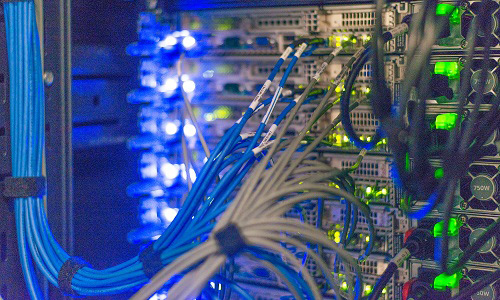Hunger for data: Future proofing data centres

We’re constantly attached to our smartphones and computers these days, consuming and creating huge quantities of data. But do you ever stop to think about where these huge amounts of data are stored? If data is at the heart of our technology based society, then data centres are the brains. These huge facilities are becoming more and more vital to the way we live our lives, and so innovations in the way they are designed and built are becoming more important too. Being able to provide reliable infrastructure to allow processing of more data is a critical component to meeting future needs for next generation data centres.
We rely on data centres to provide dependable, efficient and accessible service for consumers for most of our online and digital services. But just like your smartphone, a data centres’ capacity becomes full, and newer, more efficient, more modern technology is constantly being developed to replace the old. New technologies such as cloud computing are creating challenges for data centres and driving innovation. Meanwhile, innovations from power infrastructure and energy sources to the introduction of machine learning are creating possibilities for data centres for the future.
Energy efficiency optimisation is becoming an even bigger consideration, with more data consumed at faster speeds hungering for greater energy consumption. One innovation in this area is making use of machine learning to understand where improvements can be made to data centres systems. Companies such as Google have used machine learning to make power savings for their data centres. While these savings look small on paper, when applied across their tens of thousands of servers, they will have a huge cost saving effect.
Innovations in power infrastructure are also creating the potential for more efficient power use, which paves the way for data centres to become future-proofed against our constant drive for data consumption. Being able to provide reliable power infrastructure will dramatically improve performance and allow consumers to access more data. The cables used by data centres need to meet the demands of today’s consumer’s digital requirements, with speed and reliability at the forefront of the issue. The cables need to be flexible, resistant to electromagnetic interference, and often be fire resistant to avoid damage to equipment in case of emergency.
Increasingly, data centres are turning to renewable energy with the view of becoming more self-sustaining. In addition to being more appealing to customers wishing to utilise their services, data centres stand to gain cost benefits as wholesale prices for renewable energy become more competitive with fossil fuels. They’re also able to secure longer-term power purchase agreements with wind or solar plant developers, which can give them a locked price for the term of the contract and protect them from market volatility.
Consumers hunger for more and more data, and they want it faster than ever before. Data centres, such as the one proposed in south-west Scotland, can ensure the future-proofing of their network systems and provide a reliable service to their consumers. Our need for data will only increase, meaning the need for data centres to become more efficient and reliable is only going one way.